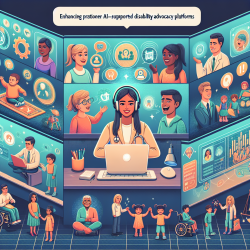Introduction to Body and Experiential Ownership
In the field of speech-language pathology, understanding the nuances of body and experiential ownership can significantly enhance therapeutic practices, especially for children. A recent study titled Experiential ownership and body ownership are different phenomena sheds light on these two distinct yet interconnected phenomena.
Key Findings of the Study
The study explores the relationship between body ownership, the feeling that a body part or the entire body is one's own, and experiential ownership, the sense of being the subject of one's experiences. Through various experiments, researchers demonstrated that these are separate phenomena, each with unique implications for therapy.
- Body Ownership: Influenced by synchronous sensory inputs, such as seeing and feeling a touch at the same time.
- Experiential Ownership: The sense of being the experiencer of sensations, which can persist even when body ownership is disrupted.
Implications for Therapy
Understanding these concepts can help practitioners tailor therapy sessions to improve outcomes. For instance, recognizing that a child may experience a strong sense of experiential ownership even when body ownership is compromised can inform strategies to engage them more effectively.
- Design activities that reinforce both body and experiential ownership to improve engagement and self-awareness.
- Use synchronous sensory activities to strengthen body ownership, which may help in cases of sensory processing disorders.
Encouraging Further Research
While this study provides valuable insights, it also opens avenues for further research. Practitioners are encouraged to explore these phenomena in diverse therapeutic contexts, particularly in virtual environments where body ownership can be more flexible.
By understanding and applying these concepts, therapists can better support children in developing a cohesive sense of self, which is crucial for their overall development.
Conclusion
Incorporating the findings from this study into therapeutic practices can lead to more personalized and effective interventions. As we continue to explore the depths of body and experiential ownership, the potential for enhancing therapeutic outcomes grows.
To read the original research paper, please follow this link: Experiential ownership and body ownership are different phenomena.










